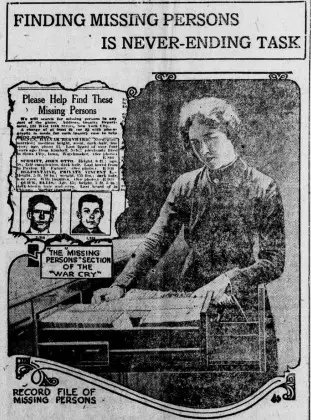
Ever wonder what families did when someone vanished before the era of telephones or national databases?
In the 1800s and early 1900s, newspapers often printed Missing Persons Notices — brief appeals placed by relatives, employers, or even the police. These small items, sometimes titled “Information Wanted” or “Missing Friends,” can be some of the most emotional finds in historical papers.
Where to Find Them:
Look in general news columns, police reports, or classified sections between 1850 and 1920. Ethnic and immigrant newspapers frequently ran “Information Wanted” columns to help reconnect families separated by migration or war. Charitable organizations, labor unions, and fraternal orders sometimes sponsored these notices as well.
What You’ll Discover:
These notices often include full names, physical descriptions, last known addresses, occupations, and relationships — for example, “John O’Connor, missing from Boston since last May; any information please to his brother Patrick, care of…” Some mention where the person was last seen or the journey they intended to take, giving valuable clues for tracing migration or disappearance.
Why It Matters for Genealogy:
A Missing Persons Notice can fill painful gaps in a family’s story — confirming residence, travel routes, employment, or kinship links. For immigrants and working-class families, these may be the only surviving records of a loved one’s disappearance or reunion effort.
If an ancestor seemed to disappear without a trace, search for phrases like “Information Wanted,” “Missing Man,” “Last Heard From,” or “Supposed to Have Gone.”
You might uncover not just a name — but a family’s heartbreak and hope preserved in print.
Example:
